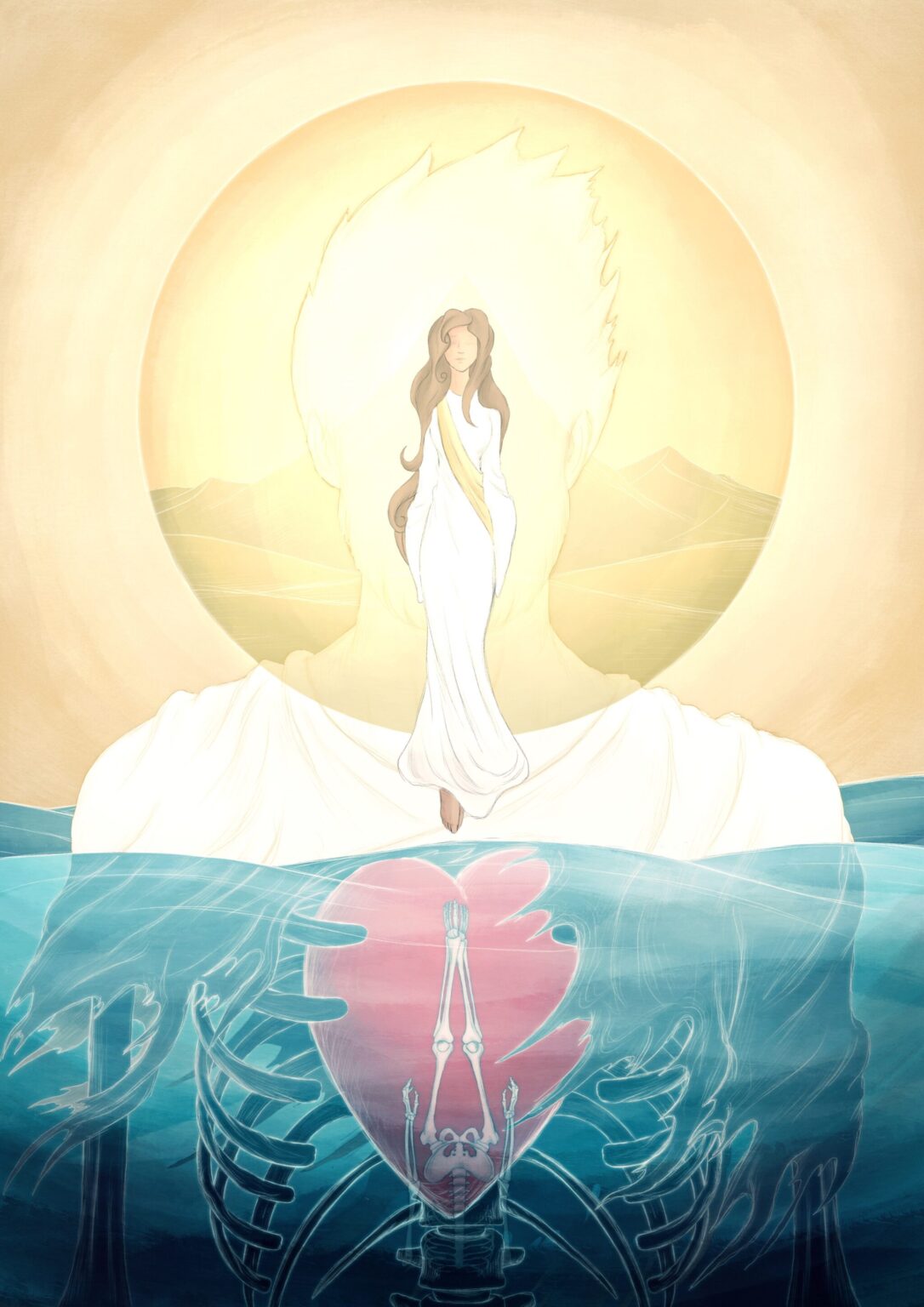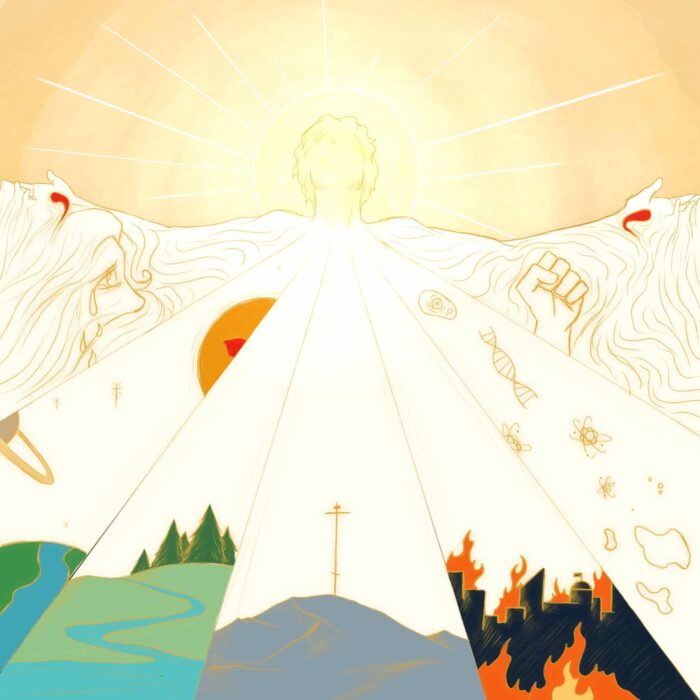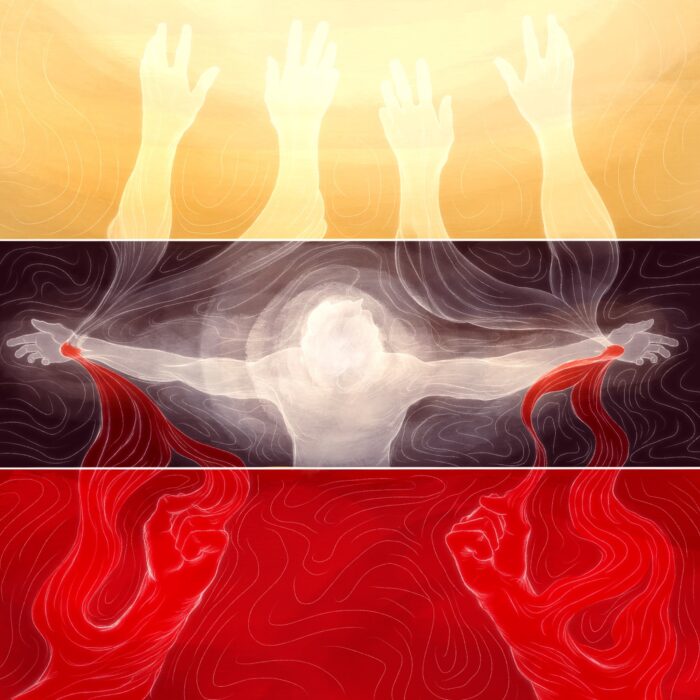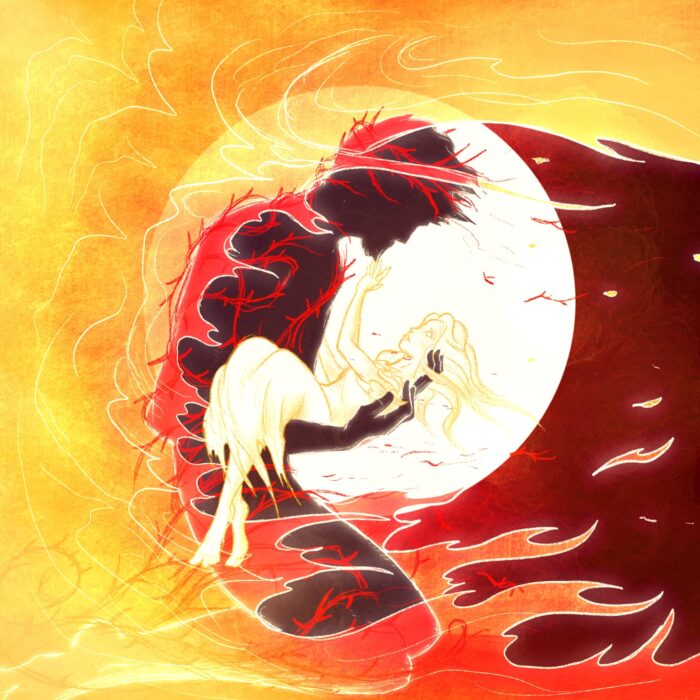
And you were dead in the trespasses and sins in which you once walked, following the course of this world, following the prince of the power of the air, the spirit that is now at work in the sons of disobedience–among whom we all once lived in the passions of our flesh, carrying out the desires of the body and the mind, and were by nature children of wrath, like the rest of mankind.
But God, being rich in mercy, because of the great love with which He loved us, even when we were dead in our trespasses, made us alive together with Christ–by grace you have been saved–and raised us up with Him and seated us with Him in the heavenly places in Christ Jesus, so that in the coming ages He might show the immeasurable riches of His grace in kindness toward us in Christ Jesus.
Ephesians 2:1-7 (ESV)
The Passage Explained
From Death to Life
As we come to this passage, the first thing to notice is the stark difference between the text’s beginning and end. Paul starts by painting a grim image of sin-slain spiritual corpses carried along by the hellward current of Satan’s own will. Yet He ends with those same corpses now raised to new life, united to God the Son, and planted in heaven itself as recipients of an unending deluge of grace. The contrast could not be more pronounced; death to life, Satan to God, wrath to kindness, hopelessness to an eternity of grace. It is as if Paul is begging us to ask, “what happened?” “What caused the change?”
We get our answer in verse 4,
“But God, being rich in mercy, because of the great love with which He loved us, even when we were dead in our trespasses, made us alive together with Christ.”
Now, there are three levels to the answer we get in verse 4. I will look at them each in turn. First and most obviously, the change happens because we–corpses drowned in our own sin–we were made alive together with Christ. This is certainly true, but more foundational than our being made alive with Christ is the impetus for Christ’s entering into our living death in the first place, namely, God’s “rich mercy.” Yet, even the mercy of God toward sinful humanity is not the nucleus of change between 1-3 and 4-7. If we press down to the third level we discover that the root of God’s merciful disposition toward His rebellious people is “the great love with which He loved us, even when we were dead in our trespasses.”
This “great love” is the fulcrum upon which this passage–and the destiny of every human soul–turns. It is the most foundational reason the horrors of verses 1-3 can become the glories of verses 4-7. In complete freedom and unfettered sovereignty, the Triune God sets His great love on the elect from all times and places and, because of this love, mercifully sends the Son into their plight to draw them to Himself. That leads us to the second major emphasis of our text, union with Christ.
Union With Christ
There is so much that could be said about the believer’s union to God in Christ, but for now I’ll confine myself to commenting briefly on the elements on which our text touches. They are three: union with Christ unto spiritual life, union with Christ unto resurrection and union with Christ unto glorification. These three categories derive from the three Greek words that Paul uses in verse 5-6. Each of these words uses a prefix to mark the idea of “union” or “together with.” The phrases that English translations use to gloss these three words seem to preserve Paul’s intentions: “made us alive together with Him,” “raised us up with Him,” and “seated us with Him in the heavenly places in Christ Jesus.” Paul is emphatic that our radical shift from spiritual death to spiritual life happens only together with Christ, that is to say, only because of our union to the Son.
Because of God’s great and sovereign love, He makes us spiritually alive together with the incarnate God-man. I ought to mention that this implies that Christ first endured the fullness of spiritual–and literal–death on our behalf (Rom.3:25).
Having made us alive, God raises us up together with Christ as well. Paul here seems to be envisioning the believer as united to Christ in His own resurrection, such that just as He was raised physically, so too we have been “raised” spiritually (however, our current state of spiritual resurrection anticipates our future physical resurrection, 1 Corinthians 15:20-23). This is a progression from merely being “made (spiritually) alive” because being “raised” implies entrance into a new kind of life, a spiritual life that is lived in the risen and reigning Christ. This will become more clear in Paul’s final “together with” statement.
Finally, having made us alive and raised us up with Christ, the sovereign love of God has seated us with Christ in the heavenly realms. Right this moment the risen Jesus Christ is seated on the throne of the universe, ruling over all things until the time appointed by the Father for His return (Matthew 28:18, 1 Corinthians 15:25, Revelation 1:45). And, according to Ephesians 2:6, those who trust in Him are seated with Him, and are in Him even now. That is an awesome thing to consider, and it becomes even more staggering when we look at verse 7.
In verse 7 Paul explains the purpose of our salvation. God’s sovereign love unites us to Christ so that “in the coming ages He might show the immeasurable riches of His grace in kindness toward us in Christ Jesus.” In other words, the goal of God’s love is to unite a people to Christ so that He might eternally and exponentially communicate the fullness of His grace to them. God made known to His people for their joy and His glory through union with Christ…..this is the goal of God’s great love and the hope held out to all those who are trusting in the crucified and risen Son.
The Picture Explained
Ephesians 2:1-7 is a starkly divided passage and I wanted this image to echo that division, with the bottom representing 2:1-3 and the top 2:1-4. Beneath the waters, both Christ and the elect (represented as a woman, “the bride”) are skeletal because–in sovereign love–the Savior entered into our sin and death. The Lord’s heart is central and stands at the transition between darkness and light because, as outlined above, the foundational transition between 1-3 and 4-5 is the “the great love with which He loved us.”
On the top half of the image the Bride is no longer skeletal (“made alive”), she is robed in regal garments (“raised up”) and is pictured in the midst of Christ’s own risen glory, (“seated with…in Christ”). All of this–both the deadness and the risen life–is pictured as taking place literally “in Christ” as a way of visually emphasizing Paul’s point that the believer’s salvation happens only by their union to the Son.
The ultimate goal of this union is that God might eternally communicate the fullness of His grace to the Church in Christ. Within the New Heavens and Earth God’s gracious fullness will flow to us in myriad ways–sights, sounds, tastes, sensations, experiences, discoveries, songs, stories, feasts, etc. etc.–and yet every communication of His kindness to us will be a communication in (and I believe of) Christ. Because of this, the glories of the New Heavens and Earth are pictured within the face and halo of the risen Son. God Himself, in the Son, is our portion and inheritance and eternal joy.




